Your Drupal SEO Playbook: Latest Insights, in One Place
Every Drupal website has its own beautiful story to tell, but even the best stories can stay in the shadows if no one can find them. That’s where search engine optimization (SEO) steps in. By following Drupal’s SEO best practices, you can make sure your story successfully reaches the people who are looking for it.
With Drupal’s rich arsenal of tools and techniques, achieving strong SEO results isn’t just possible, it’s highly likely. Drupal offers sensible out-of-the-box configurations and robust modules that hide true power behind user-friendly interfaces, covering virtually every aspect of search engine optimization. It’s no surprise that some of these tools rank among the top 10 most installed Drupal modules of all time.
Interested in giving your content a voice loud enough to be heard and a presence strong enough to be noticed? With a genuine hope that every great Drupal website finds the recognition it deserves, we’re sharing this compilation of our latest SEO insights.
Collection of insights for SEO in Drupal
Optimize your content in real time with detailed guidance
Before everything else, SEO success requires high-quality, useful, and unique content. But just like a beautiful painting shines brighter in the right frame, a well-applied set of SEO best practices can make your content stand out even more. There are no guarantees, but with these practices in place, your pages are far more likely to climb higher in organic search results.
The challenge is that when you’re focused on creativity, it’s not always easy to keep every SEO requirement in mind. And you don’t have to, Drupal has an excellent module that guides you through SEO-friendly content creation in real time. It analyzes your text and meta tags, then gives detailed feedback and scores across the key points.
All you need to do is enter the focus keyword you want your piece of content to rank for. The Real-time SEO module then evaluates whether you’ve:
- used this focus keyword enough, but not excessively
- placed it in all the right spots — like the first paragraph, subheadings, and more
- written in a clear, easy-to-read style
- added Alt text to images
- optimized your meta title and description lengths
- provided enough text for SEO relevance
- included both internal and external links
Check out our step-by-step walkthrough for optimizing your Drupal content with the Real-time SEO module. So helpful and intuitive, this module is now one of the gems of the SEO Tools recipe — a package of pre-configured features in Drupal CMS.
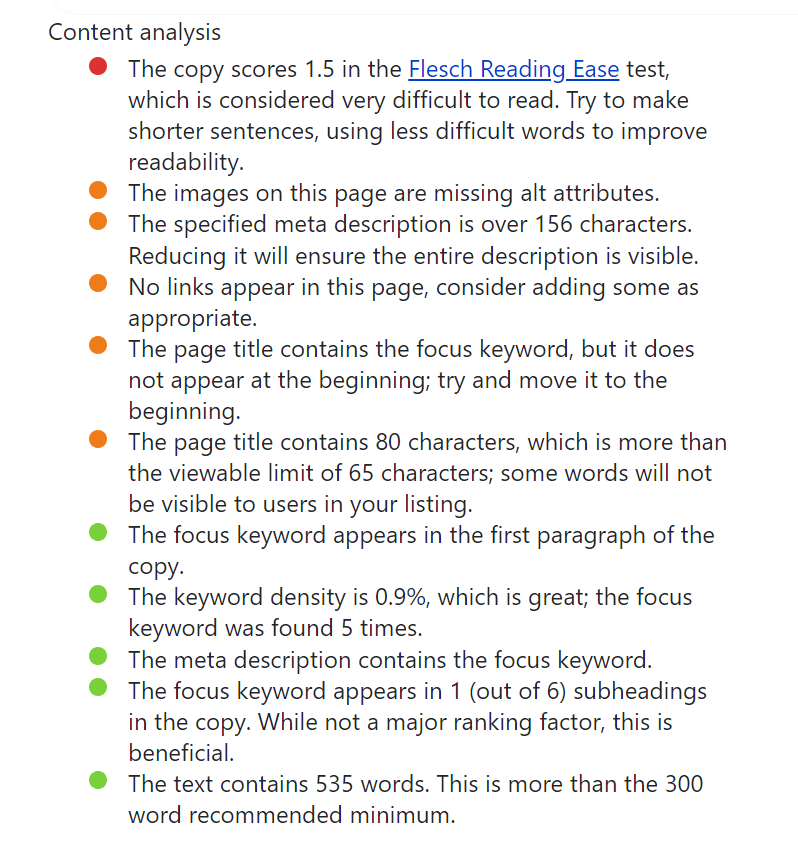
Help search engines find and index your content better
While the previous section focused on creating content that meets SEO best practices, it’s just as important to make sure search engines can actually find it. That’s where a good XML sitemap comes in.
It acts as a structured guide for search engines, listing every important page on your Drupal website and showing them how your content fits together. With it, your site becomes easier to crawl, and your pages have a better chance to appear right where they belong — in front of the right audience.
For building and managing sitemaps, Drupal provides a powerful solution: the Simple XML Sitemap module. Straight out of the box, it generates a ready-to-use default sitemap and keeps it up to date automatically, as often as you choose in the settings.
Search engines always have access to the latest version of your site’s structure. The module also supports multilingual sites and generates sitemaps that fully comply with Google’s standards.
Feature-rich and flexible, the Simple XML Sitemap module covers nearly every sitemap need. Want a full tour of its capabilities and settings? Explore our detailed guide on configuring your Drupal XML sitemap.
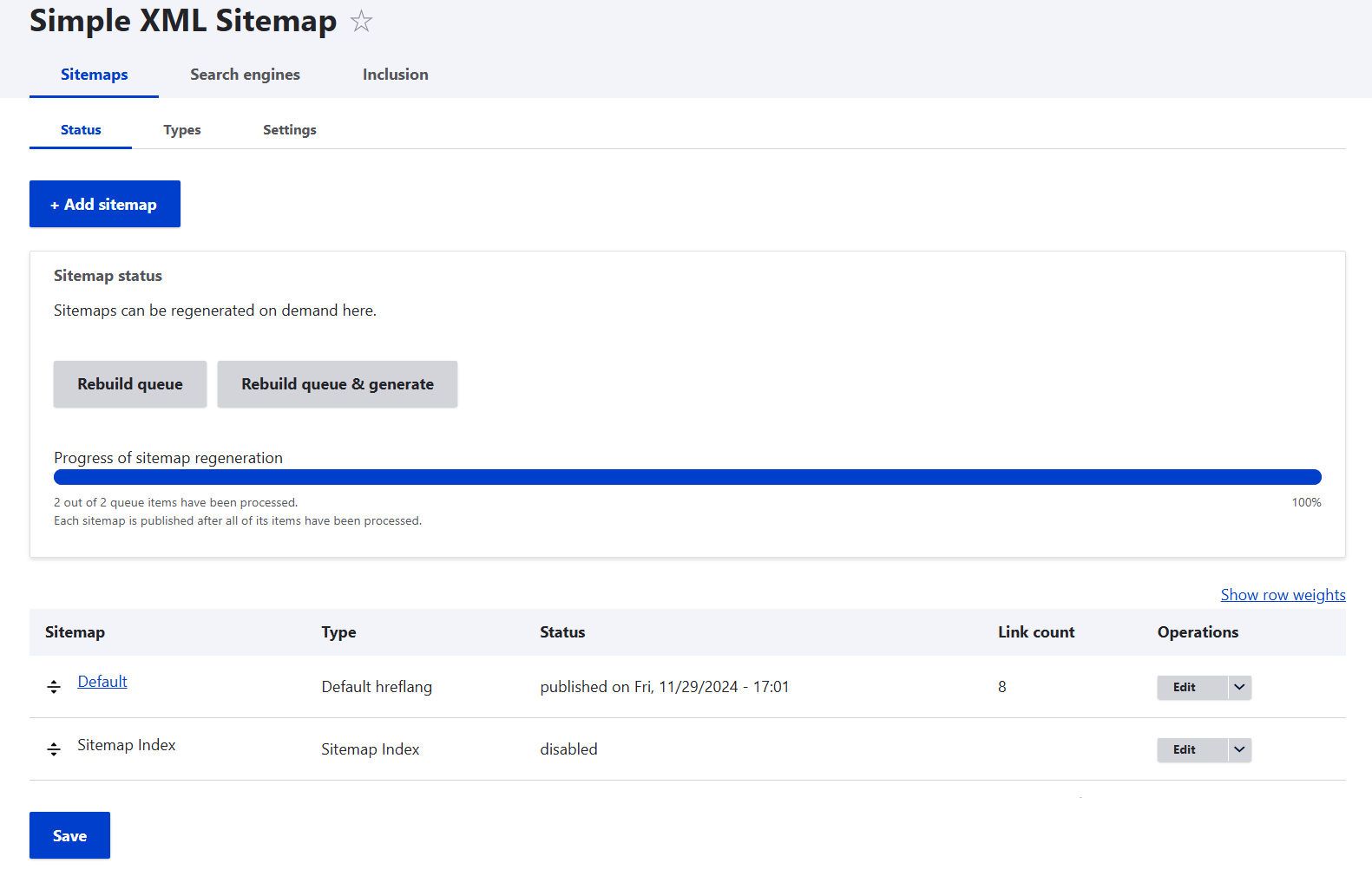
Avoid broken links and keep visitors on track
So you’ve optimized your content for search engines and made sure crawlers can see it. Now it’s time to tidy up your website’s links. Few things damage user experience and SEO more than broken ones as when visitors click through to a missing page, they leave, and search engines take note.
Think your site is perfect and you don’t have any broken links? Chances are, you do. Even the best-maintained websites collect them over time, whether due to removed or merged pages, fixed typos, a switch from HTTP to HTTPS, or many other small changes that quietly break connections behind the scenes.
To preserve your site’s credibility and keep every path working smoothly, Drupal offers a reliable tool, the Redirect module. This module makes managing URL changes effortless. You can create redirects that automatically guide users and search engines to the correct page instead of leaving them stranded on a 404 error. Even when 404 errors do occur, the module turns them into an opportunity: it logs these instances, helping you identify patterns and create redirects that prevent repeated dead ends.
Beyond individual pages, Redirect also supports domain-level redirects, ensuring visitors and search engines always reach your main site, even if they start from an alternate domain. It integrates seamlessly with the Pathauto module to keep your URLs clean and consistent, which we’ll discuss in more detail right next.
Want to learn more about how Drupal redirects work? Explore our step-by-step guide on configuring and using the Redirect module in Drupal.
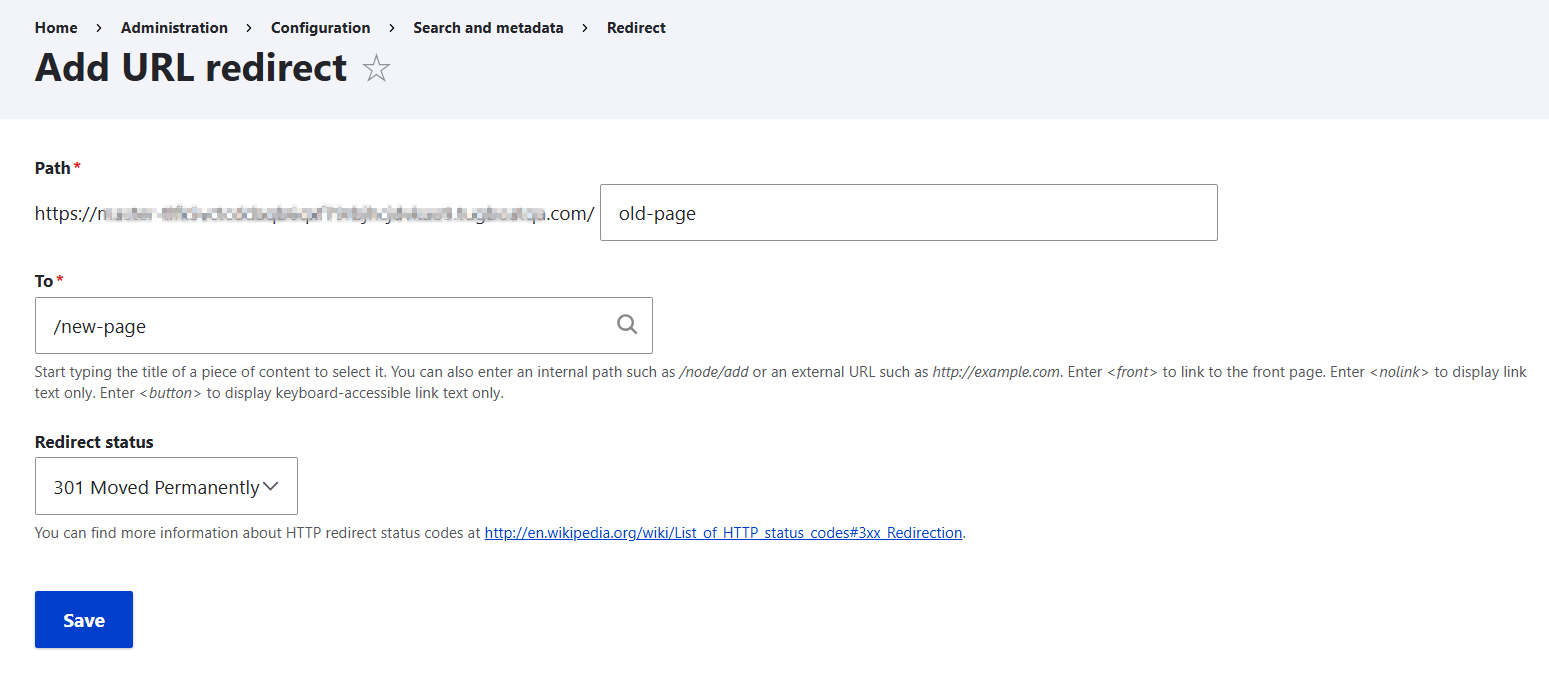
Autogenerate SEO-friendly URLs
A clean, descriptive URL can make a big difference for both users and search engines. Instead of a random string like /node/123, imagine a URL such as /news/community-cleanup-event — instantly more readable, memorable, and meaningful. Search engines also prefer URLs that reflect a page’s content, making them an essential part of on-page SEO.
Drupal makes this process effortless with the Pathauto module. It automatically generates SEO-friendly URLs (called “URL aliases”) based on patterns you define — for example, /blog/[node:title] or /events/[node:title].
For example, a blog post titled “How to Launch a Community Garden” could become:
/blog/how-to-launch-a-community-garden
A fundraising campaign titled “Support Our Clean Water Initiative” could become:
/campaign/support-our-clean-water-initiative
This ensures consistency across your site and saves your content editors the hassle of manually creating paths for every page. Pathauto works seamlessly with Drupal’s Token system, allowing you to pull in the elements of content pages like author names, categories, or publication dates into your URL structure based on your needs.
Check out our step-by-step guide to autogenerating SEO-friendly and consistent URLs in Drupal, where you can discover the best practices for how URL paths should look, learn how to configure URL patterns, and make the most of Pathauto’s features.
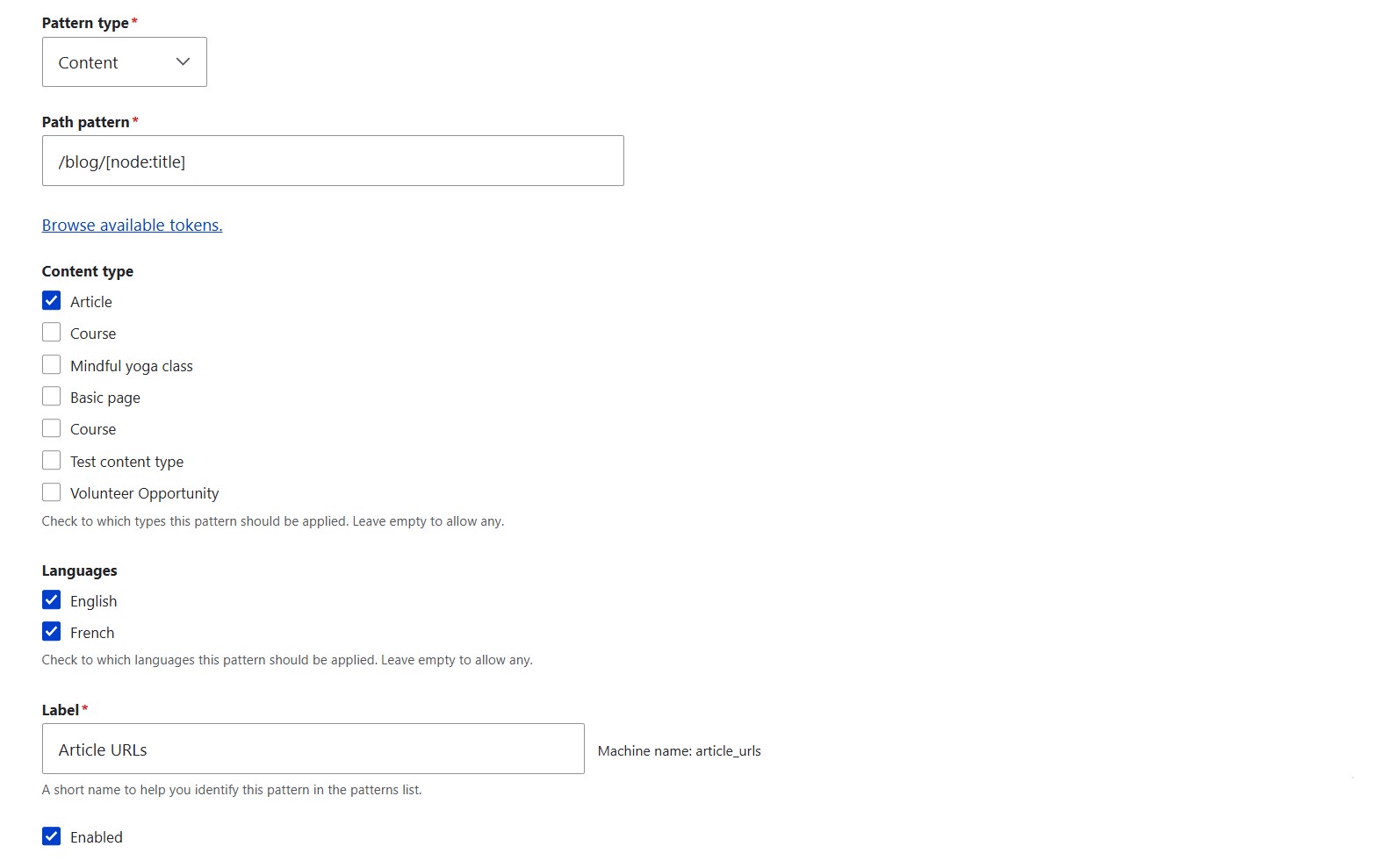
Make sure your audience hears you — literally
We’ve talked about being “heard” figuratively, but voice search lets your content literally speak to your audience. Imagine your snippet read aloud in search results, that’s real reach in action.
Even though AI-generated summaries that appear at the top of search results are changing the rules of the game, voice assistants still turn to featured snippets when answering queries out loud.
Getting there isn’t automatic, the ideal voice search snippet has a few key traits, including being natural and conversational, containing long-tail keywords, staying concise and clear, using the most snippet-ready formatting, targeting local searches, and leveraging structured data, among others.
Discover a complete guide on making your Drupal content ready for voice search, together with the suggestions of excellent Drupal modules that should guide you along the way. They will simplify every task you perform, from understanding if your text is clear to creating a beautiful accordion menu that is perfect for a question-answer style, so much appreciated in voice search.
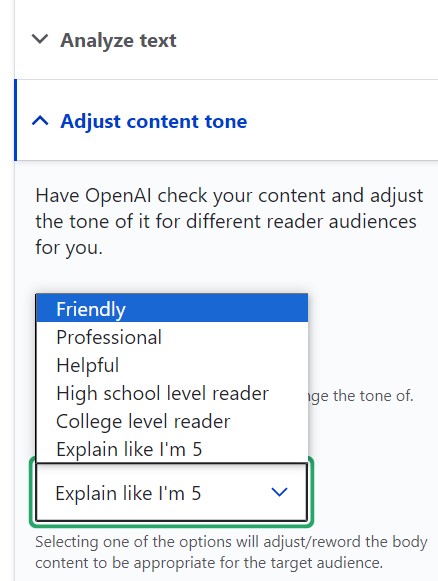
Make your results stand out with structured data
Your pages can appear in search results in a more engaging way, as enhanced listings that may include images, ratings, reviews, pricing, FAQs, and more. To make this possible, you use a special “language” that search engines understand: standardized metadata known as structured data. This allows search engines to interpret, categorize, and display your content fully, ensuring all its elements are represented in rich results.
Structured data relies on schemas; labels or blueprints for content. For example, a nonprofit’s event page can use the Event schema, a university’s program or course page can use the Course schema, and so on. Select the schema type that fits each page, and then test your implementation with Google’s Rich Results Test to ensure search engines can read it correctly.
Drupal simplifies implementing structured data, especially with its support for schema markup via the Metatag module, which allows you to add meta tags to your content, including those for structured data (like JSON-LD for schema.org types).
For a deeper dive into structured data and its benefits across all websites, check out the detailed blog post by our team’s Digital Strategist Richard Nosek and Digital Marketing Strategist Greta Barbosa, which explains the principles, practical applications, and tips for maximizing your results.

And more SEO insights for you
Keep an eye on our blog to catch the latest posts packed with SEO gems:
- The SEO Tools Recipe in Drupal CMS: all the best SEO features curated in one convenient package that can be installed at the click of a button.
- How canonical tags help you avoid duplicate content issues, consolidate the SEO value of your pages, and send clear, powerful signals to search engines
Stay tuned, we’re constantly sharing insights to help your Drupal site perform at its best. For organizations looking to go further, tailored SEO strategies and support can help turn these insights into real, measurable results.








